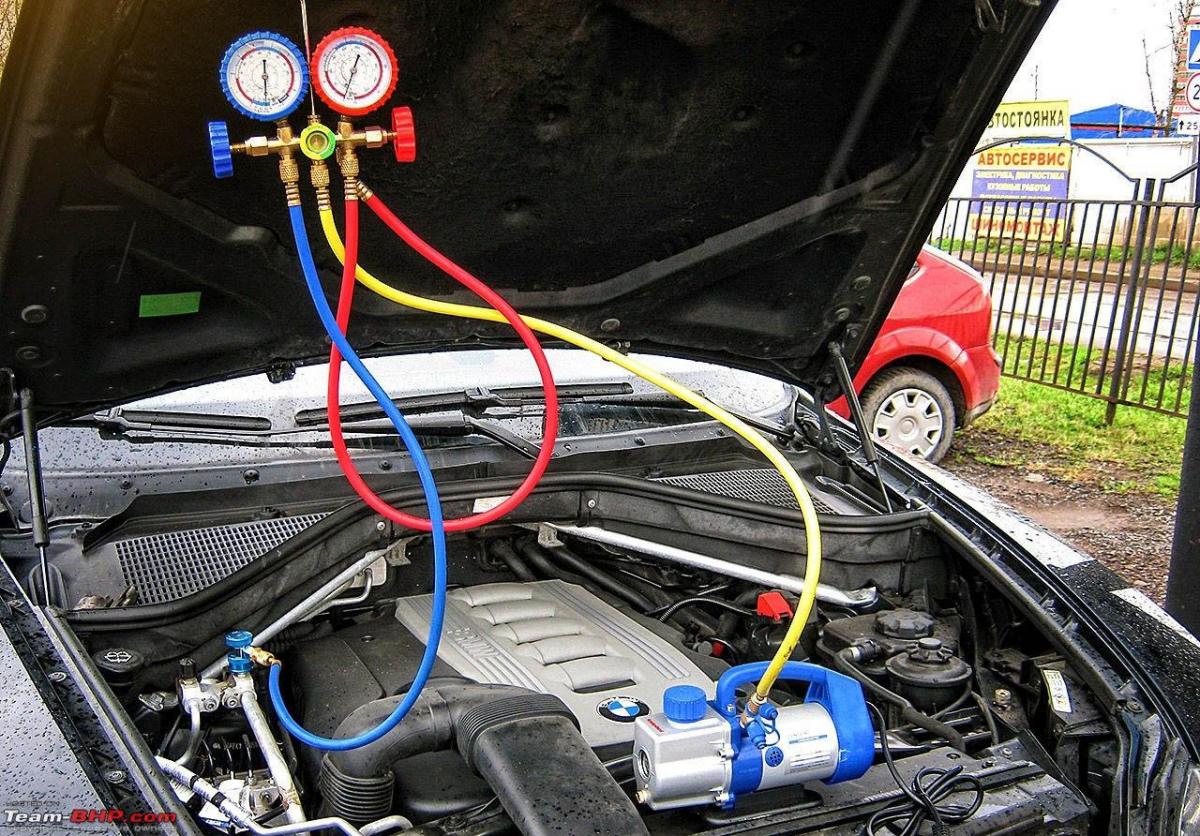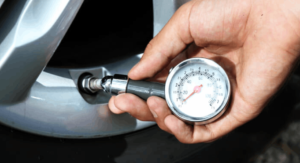To drain R134A from a car, you must use an EPA-certified refrigerant recovery machine. Never vent R134A directly into the atmosphere, as it is illegal and harmful to the environment.
Draining R134A refrigerant from a vehicle is not a typical DIY job; it requires specialized equipment and adherence to environmental regulations.
Whether you’re a professional automotive technician or an environmentally conscious car owner, proper handling of R134A is crucial to protect both the vehicle’s air conditioning system and our planet.
Automotive professionals use a recovery machine designed for this purpose to ensure the refrigerant is captured without release into the environment.
Handling R134A responsibly underscores the importance of these procedures for maintaining vehicle performance and supporting environmental sustainability.
Remember, releasing R134A or any refrigerant into the atmosphere is not only environmentally detrimental but also against the law.

Credit: www.amazon.com
Introduction To R134a Refrigerant
R134A refrigerant plays a crucial role in car air conditioning systems. This substance cools the air, providing comfort during hot days. Over time, R134A may require draining and proper handling due to environmental regulations.
Understanding R134a In Car Air Conditioning Systems
R134A is a hydrofluorocarbon (HFC) refrigerant. It’s colorless, non-flammable, and relatively non-toxic, making it a popular choice for vehicle AC systems.
R134A replaces older refrigerants that were harmful to the ozone layer. Car AC systems rely on R134A for their cooling effect.
It absorbs heat from the car’s cabin air and moves it outside.
Environmental And Safety Concerns With R134a
Although R134A is an improvement over previous refrigerants, it still impacts the environment. R134A adds to greenhouse gas emissions when released into the atmosphere.
The gas must be collected in a proper container to prevent any release into the air. Always wear protective equipment and follow guidelines for disposal.
Legal And Environmental Considerations
Draining R134A from your car’s air conditioning system isn’t just a matter of vehicle maintenance. It requires adherence to laws protecting the environment.
Understanding legal and environmental considerations is crucial for any car owner. It ensures they perform this process responsibly.
Epa Regulations On Refrigerants
The United States Environmental Protection Agency (EPA) has strict rules on refrigerant gas handling. These rules, part of the Clean Air Act, aim to minimize ozone depletion. Section 609 of the Act mandates certification to legally handle and recover R134A. Not following these rules leads to severe penalties. Car owners must use certified equipment and follow the EPA’s procedures.
Importance Of Proper Handling And Disposal
R134A is a greenhouse gas with the potential to contribute to global warming when released into the atmosphere. Proper handling and disposal ensure safety for the environment and human health. Specialized recovery machines must retrieve R134A.
They prevent its escape. Authorized facilities receive the refrigerant for recycling or disposal. Avoid releasing R134A during DIY repairs. Always consult professionals.
- R134A should not release into the atmosphere.
- Use EPA-certified recovery equipment.
- Seek out professional service providers for removal.
- Understand and follow legal procedures for handling refrigerants.
Tools And Materials Needed For Draining R134a
Knowing the right tools and materials is key for safely draining R134A from a car. This task requires precision and attention to details. Read on for a comprehensive list of what you’ll need to get started.
List Of Special Tools And Equipment
Draining R134A refrigerant calls for specific tools. Gather these items before starting:
- Recovery machine: It extracts the refrigerant from the system.
- Refrigerant scale: Helps in measuring the amount of refrigerant extracted.
- Vacuum pump: Ensures there’s no refrigerant left after recovery.
- Manifold gauge set: Monitors pressure within the air conditioning system.
- Service valves: Control the flow of the refrigerant during extraction.
- Cylinder for recovered refrigerant: Stores the refrigerant after extraction.
- Refrigerant identifiers: Check for contaminants in the refrigerant.
Safety Gear And Precautionary Measures
Always work in a well-ventilated area to prevent inhalation of refrigerant gases. Avoid skin contact with R134A; it can lead to frostbite.
Secure any loose clothing and remove jewelry to avoid entanglement in equipment.
Personal safety is vital when handling refrigerants. Ensure these items are on hand:
| Gear | Function |
| Gloves | Protect hands from cold refrigerant. |
| Safety goggles | Guard eyes against liquid splashes. |
| Apron | Keep clothing free from chemical stains. |
| Respirator | Breathe safely around fumes. |

Credit: m.youtube.com
Step-by-step Guide To Draining R134a
Draining R134A from your car’s air conditioning system is a delicate process.
It requires precision, proper equipment, and adherence to safety protocols.
This guide walks through each step to ensure a safe and efficient removal of R134A refrigerant.
Preparing Your Vehicle For Refrigerant Removal
Ensure safety first. Put on safety glasses and gloves.
Park the vehicle in a well-ventilated area.
Locate the service ports. Refer to the vehicle’s manual.
- Find the low-side and high-side ports.
- These ports have different sizes to prevent mixing.
Switch off the engine before proceeding.
Recovering R134a Using Proper Techniques
Gather necessary tools. You’ll need a refrigerant recovery machine and hoses.
- Connect recovery machine to the service ports.
- The low-side hose to the low-side service port.
- The high-side hose to the high-side port.
Begin the recovery process. Follow the machine’s instructions.
Ensure all R134A is properly extracted. This can take several minutes.
Storage And Containment Of Drained R134a
Use approved containers.
Refrigerant must be stored in DOT-approved cylinders.
| Action | Guideline |
|---|---|
| Transfer R134A | Directly from the vehicle to the recovery cylinder. |
| Label the Container | Clearly indicate that it contains R134A. |
Seal containers tightly. Prevent leaks and contamination.
Keep in a cool, dry place away from direct sunlight.
Troubleshooting Common Issues
Draining R134A from a car’s air conditioning system can be straightforward. But sometimes, it’s not. Problems can arise, and you need to know how to fix them. This section will help you troubleshoot common issues you might encounter while draining R134A.
Dealing With System Contamination
Contaminated refrigerant affects your car’s A/C performance. Here’s what to do:
- Identify the contamination: Look out for signs like unusual odors or oily substances.
- Equipment check: Make sure your recovery machine has proper filters.
- System flush: Remove contaminants with a flush agent.
- Replace components: Sometimes, you need new parts like the dryer or expansion valve.
Overcoming Equipment Malfunctions
Equipment issues can halt your progress. Keep these tips in mind:
| Problem | Solution |
|---|---|
| Recovery unit not starting. | Check power source and fuses. |
| No refrigerant flow. | Ensure valves are open. Check for blockages. |
| Slow recovery process. | Verify high-pressure levels and fix blockages. |
| Inaccurate gauges. | Calibrate or replace the gauges. |
Follow these steps to solve equipment malfunctions swiftly.

Credit: www.team-bhp.com
After Draining R134a: Maintenance And Recharging
Once you’ve safely drained the R134A from your car’s AC system, it’s crucial to perform maintenance. This ensures your AC runs efficiently.
Proper maintenance guarantees your comfort during hot days. Now let’s focus on checking your AC system for leaks and how to recharge it.
Checking For Leaks And System Integrity
Before adding new refrigerant, you must check for leaks. An AC system with leaks will not work well. Here is how to ensure your system is ready for a recharge:
- Inspect all AC components. Look for signs of wear or damage.
- Use a leak detection kit. This kit can help you spot invisible leaks.
- Check the AC compressor. Ensure it’s working properly.
- Examine hoses and connections. Make sure they are secure and leak-free.
Steps To Recharge The Car Ac System With R134a
Recharging your AC system with R134A is a straightforward process:
- Gather the right tools. You will need an R134A recharge kit and gloves.
- Locate the Low-Pressure Service Port. The port is found on the larger AC line.
- Connect the recharge kit. Attach the hose from the kit to the service port.
- Start the car. Let the engine run. Turn the AC on to its max setting.
- Add the refrigerant. Follow the kit’s instructions to refill the system.
- Monitor the pressure. Use the gauge on the kit to ensure correct fill levels.
- Disconnect the kit. Do this once you reach the optimal pressure level.
Always wear safety glasses and gloves to protect against accidental exposure to refrigerant. Keep in mind that overcharging the AC system can be harmful. It can cause more damage to your system.
Frequently Asked Questions For How To Drain R134a From Car?
Is It Ok To Release R134a Into The Air?
No, releasing R134a refrigerant into the atmosphere is not permissible due to its ozone-depleting potential and contribution to climate change. It’s essential to follow proper disposal procedures in compliance with environmental regulations.
Can You Remove Ac Refrigerant From Car?
Yes, you can remove AC refrigerant from a car, but it requires special equipment and adherence to environmental regulations. Professional service is recommended to safely handle and recycle the refrigerant.
Is It Illegal To Discharge R134a?
Yes, it is illegal to intentionally release R134a into the atmosphere, as it is a potent greenhouse gas regulated under environmental protection laws. Proper handling and disposal are required by law.
How Do You Discharge Ac Refrigerant In A Car?
Discharging AC refrigerant from a car requires professional equipment. A certified mechanic connects a recovery machine to the system, which safely extracts and stores the refrigerant. Don’t attempt this at home; it’s illegal and hazardous to release refrigerant into the atmosphere.
Conclusion
Draining R134A from your car’s AC system requires precision and safety. By following the steps outlined, you’ll ensure an effective and environmentally responsible procedure. Remember, consulting a professional is wise if you’re uncertain. With these tips, your car’s AC maintenance is set for optimal performance.
Stay cool and drive safe!
How to Build Oil Pressure Without Starting Car?





